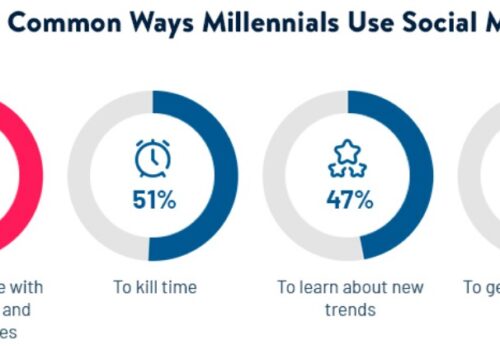The field of education has undergone a significant transformation with the emergence of online learning.
The traditional method of learning, which involves physical classrooms and face-to-face interactions, now faces competition from the convenience and accessibility of online learning platforms.
Let’s examine the Traditional Learning vs. Online Learning Statistics to gain insight into the evolving landscape of education.
By understanding these statistics, all can gain a deeper understanding of the advantages, challenges, and future possibilities of both learning approaches.
| Statistics | Traditional Learning | Online Learning |
|---|---|---|
| Market Growth | Declining due to the rise of online alternatives | Expected to reach $370 billion by 2026 |
| Student Preferences | 30% of students prefer online classes | 70% of students prefer online classes |
| University Adoption | Shift to more online courses | 98% of universities offer online courses |
| View of Academic Leaders | Some Academic Leaders prefer Traditional Learning | 77% believe online education is equal/superior |
| Information Retention | 8% to 10% | 25% to 60% |
| Environmental Impact | Higher energy and CO2 emissions | 90% less energy and 85% fewer CO2 emissions |
| Cost of Degree | More expensive | Online degrees are over $10,000 cheaper |
| Learning Time | Longer duration | 40% to 60% less time required |
| Gender Participation | Balanced | 62% female participation in online courses |
What Is a Brick-and-Mortar Education?
By its very name, you can pretty much grasp the framework of brick-and-mortar education. Students come to campus and attend classes in physical classrooms, which is the traditional approach to attending college.
Brick-and-mortar colleges, which are still the most popular way to get an education, allow students to engage with one another and have face-to-face discussions with teachers.
This is perhaps why this type of traditional learning is still so popular students can interact with one another and ask questions directly to the speaker.
They take more responsibility for their examinations, for each and every deadline that falls their way, and for attending class on a regular basis.
However, some students’ mindsets are not compatible with this type of college lifestyle. Location, campus culture, lack of flexibility, and attendance are all factors that they find bothersome thus they opt to withdraw.
They are well aware that being absent or late can be used against them in future exams. Or perhaps the lecture schedule conflicts with their part-time employment, making it hard for them to attend class.
Overall, campus life appears to be overwhelming, and the lack of flexibility may appear to be a danger to their desire to learn. Fortunately, technological advancements provided them with alternative possibilities.
Online vs Traditional Learning Statistics
Both traditional and online learning institutions have their own set of advantages and disadvantages. However, the fact remains that virtual education has become a permanent aspect of the educational landscape and its popularity is on the rise.
The data from early 2014 clearly indicates that e-learning is increasingly becoming a preferred choice among students. The number of learners enrolled in online universities has been steadily increasing year after year.
But how would these programs compare to traditional classroom instruction?
The Rise of Online Learning
- Explosive Growth: Online learning has grown by 900% since 2000.
- Market Worth: By 2026, the online learning industry is projected to reach over $370 billion.
- Increasing User Base: There will be 57 million online learning users by 2027.
- Revenue in the US: In 2023, the US is expected to generate $74.8 billion in online learning revenue.
- China’s Growing Market: China’s online learning industry is expected to hit $171 billion by 2030.
- US Market Forecast: By 2030, the US online learning industry could reach $687 billion.
- Current Industry Size: The online learning sector will be a $240 billion industry by 2022.
Accessibility and Cost Effectiveness of Online Learning
- Global Reach: 49% of students worldwide have completed some form of online learning.
- US Students’ Participation: Over 30% of American students have taken at least one online course.
- Massive Open Online Courses (MOOCs): In 2022, over 200 million learners signed up for at least one MOOC.
- Cost Comparisons: 54% of colleges charge remote students more than in-person students, with the average online college course costing over $15,000 per year.
Engagement, Performance, and Adaptability
- Daily Engagement: 63% of US students engage in online learning activities daily.
- Improved Retention: Online learning can improve student retention rates up to 60%.
- Flexibility: 63% of students choose online learning for its flexibility.
Cost and Time Efficiency
- Reduced Learning Time: Elearning requires 40% to 60% less time than traditional classrooms.
- Affordability: An online degree is more than $10,000 cheaper than a traditional on-campus degree.
- Choosing Online for Affordability: 60% of US graduates choose online programs for their cost-effectiveness.
Future Trends
- Companies Investment in E-Learning: Companies with online learning see revenue per employee 200% higher.
- Universities Adapting: 98% of universities now offer online courses.
The Benefits and Drawbacks of Online Learning
Image credit: Pexels
Online Learning’s Advantages:
- Lower costs – One of the most appealing aspects of virtual education is its relatively inexpensive. Enlisting in an online school eliminates the need to travel to class daily or even relocate to another state. You automatically conserve a lot of money on meals, textbooks, and school supplies by avoiding travel or moving fees.
- Time savings — Given the lack of a commute, this is a given. You can save time by just switching on your laptop and enrolling in an online programme instead of physically getting ready and going to class.
- Using technology – Taking online classes allows you to use tech more frequently, allowing you to become more tech-savvy.
- More opportunities for interaction – Although it may seem counterintuitive, e-learning can be a terrific way to increase class interaction. Even pupils who are hesitant in traditional classrooms can participate in an online class since it creates an atmosphere where they can be themselves.
Online Learning’s Disadvantages:
- Isolation — While online classes may be beneficial for more reserved individuals, they can be isolating for those who depend on actual interaction with their peers.
- Lack of discipline – For pupils who lack self-control and demand frequent guidance from their peers or teachers, remote learning might be counterproductive.
- Instructor training is essential – In order for an online course to run well and achieve its goals, the professor must be educated in how to utilize the technology needed to teach. Furthermore, educators must figure out how to get the most out of their learners even when they are not physically present.
- Lastly, there are other possibilities in online learning where anything could go wrong owing to technical issues such as loss of voice, video, or even total connectivity.
Traditional Learning’s Benefits and Drawbacks:
Image credit: Pexels
Traditional Learning’s Advantages:
- Increased interaction — It suffices to say that professors who are physically present in class receive more communication from their students than those who learn remotely.
- Hands-on learning — Because students are present, traditional learning gives them a sense of security & control over their learning.
- Experience campus life – Being able to engage with all of the students on campus is an important aspect of learning in college. While this is doable online, traditional classes provide many more options.
- Increased communication with other pupils means you’ll be able to build a larger network that will aid you in the future once you join the workplace, which is a bonus to the last benefit.
Traditional Learning’s Disadvantages:
- Expensive — Enrolling in a regular program means you’ll have to pay more for transportation, food, supplies, and other expenses.
- No flexibility – If you work and study at the same time, in-person classes offer very little flexibility in terms of class attendance.
- Time-consuming — Attending classes in person will occupy more of your time than attending sessions online. This involves getting ready for class and potentially commuting.
The Percentage of People Who Enroll in Online Classes:
- A total of 6,700,000 students are enrolled in online courses.
- There are currently 275+ approved online institutions.
- The proportion of university students who have taken at least a single online course is 30 percent.
- 67 percent of college professors believe blogs, videos, podcasts, as well as other digital media are essential teaching tools, whether they teach virtually or in a traditional setup.
What are the Subjects that Students are Studying?
Traditional Learning’s Most Prominent Bachelor’s Degrees
- Business
- Accounting
- Psychology
- Nursing
- Elementary Education
Online Learning’s Most Prominent Bachelor’s Degrees
- Business
- Health Administration
- Nursing
- Psychology
- Elementary Education
Students’ Perspectives on Online Learning
- 77% of educators feel that e-learning is as good as, if not better than, traditional schooling.
- Roughly 70% of students believe that online learning is on par with or better than traditional classroom instruction.
- 26 percent of online students confess that they learn better online rather than in a classroom.
Why is it that Online Learning is More Efficient?
Although there are some small drawbacks to online learning, the demand for it, particularly during the pandemic, has resulted in significant advancements.
Online classes are unquestionably more inclusive, as they allow even individuals who aren’t particularly well-off monetarily or who have other responsibilities to participate.
The results of standardized assessments taken by online students
- Classroom students’ average score is in the 50th percentile.
- The average online learner’s score is in the 59th percentile.
- The ratio of learners who differ is 5:1.
- When learners differ by a 5:1 ratio, the slowest learner takes 5 times longer to learn than the fastest student.
- 90 percent of these students will succeed in reaching higher levels, albeit only if they are given adequate attention.
- Face-to-face education is the most effective way to achieve these levels of focus.
- Thankfully, 97 percent of online colleges’ courses have a student-to-faculty ratio of 25:1.
Costs of online learning compared to traditional learning
- Online degrees are up to 80 times less expensive than traditional degrees.
- Traditional degrees cost an average of $85,000.
- The average price of an online degree is $30,000.
FAQs
🧐 What are the main differences between traditional learning and online learning?
Traditional learning occurs in physical classrooms with face-to-face interactions, while online learning takes place over the internet, allowing flexibility in when and where students study.
💬 How do student engagement and interaction differ between traditional and online learning environments?
Traditional learning provides immediate in-person interaction, while online learning requires proactive engagement through discussion forums, video conferencing, and collaborative tools.
🌐 Are there global trends in online learning adoption?
Online learning adoption varies globally, with some countries leading in online education innovation and growth.
💡 What trends are emerging in online learning?
Trends include personalized learning, gamification, and the use of AI for adaptive learning.
🤝 Are there opportunities for combining traditional and online methods?
Yes, blended learning combines both, offering flexibility and personalized approaches to education.
Quick Links:
- Browser Statistics
- Pinterest Statistics
- Amazing AR Statistics
- Most Fascinating Oligarchs Statistics
- Ecommerce Statistics
- Social Media Statistics
- Instagram Statistics
Conclusion: Traditional Learning vs Online Learning Statistics 2025
It is clear that online learning is becoming more popular along with traditional learning.
Each method has its own advantages and disadvantages, and the future of education may involve a combination of both.
Effective teaching and adaptable learning are essential. The rapid expansion of online learning highlights its growing significance in today’s educational environment.
Which type of learning would you prefer, and what is your experience of the same? Let us know in the comments below.







